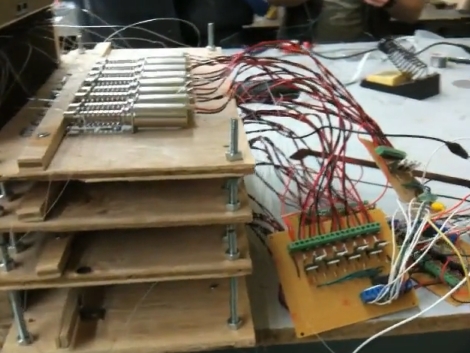
Playing store just got really, really fun because you can now build your own LEGO barcode scanner. As you can see after the break, it works well and it’s fast like a real barcode scanner. Unfortunately it doesn’t scan real barcodes. Or at least not traditional ones. As we learned in the Barcode Challenge, standard barcodes are a set of white and black bars that make up the ones and zeros of the code. This system uses the same white and gray bar system but it seems that it’s only the number of bars that identify an item, not a code created by a particular combination of light and dark. The items above are all scannable because the scanner counts the 2, 3, 4, 5 or 6 white beams on the bottom of each package. Still, it’s incredibly clever and a great toy for the young hackers to build if they have a little help.
















